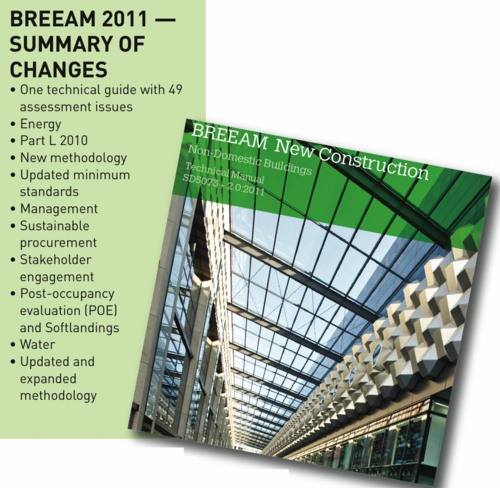Sharing opinions

What happened when industry experts got together to talk about BREEAM? What about credits for refrigerants and CHP, for example? BSRIA’s James Parker provides an insight.
It is often said that you shouldn’t talk about politics or religion in polite company. Well, when it is a gathering of construction professionals you may add BREEAM to that list.
BREEAM (the BRE Environmental Assessment Method) has been around for over 21 years and appears to be producing more and more debate in the industry as it ages. BSRIA set up the Building Environmental Assessment Network for its members to discuss issues arising from all such methods and to provide an industry-backed voice to the scheme managers.
On Valentine’s Day in February, the network recently held an event specifically to look at BREEAM, where it is now and which direction it should go in. Maybe not a love affair but there were certainly plenty of strong feelings on display.
Network chair Dave Cheshire of AECOM gave a background to BREEAM, including its history and development from only one assessment organisation in 1990 to around 2000 assessors in 2012. He also looked at some interesting figures showing the amount of effort needed for each credit and the cost effectiveness.
The audience also heard an overview of the changes included in the latest version of BREEAM — New Construction 2011, presented by Tim Bevan from BRE’s BREEAM office. He also gave an overview of how the update of BREEAM works, with some hints for the future. Expect another new version in late 2013/early 2014 — mainly to include updates from the next round of changes to the Building Regulations. Looking further ahead, he talked about the next generation of the assessment method, moving to a scorecard approach and prescribed solutions — processes versus a quantitative assessment based on Life Cycle Analysis.
The meeting was not short of questions from industry professionals. Key points raised during the Q&A session at the event were linked to technical issues and the processes.
We got a consultant’s view from Julie Godefroy of Hoare Lea. She raised some important issues with the actual implementation of BREEAM on real-life projects, the value of energy credits that had been reduced in the update to 2011, the technical difficulty in gaining refrigerant credits, and if the industry is ready for Environmental Product Declarations.
James Parker of BSRIA talked about the professionals involved with BREEAM — the assessors and accredited professionals. He posed questions about the need of better knowledge dissemination to both. Should CPD be required as with energy assessors? Should there be a tiered approach to qualifications to reward those with much more experience and knowledge?
Last on the bill was Roderic Bunn of BSRIA talking about Softlandings and environmental assessment systems in general. After briefly explaining the principles of the Softlandings framework, he discussed the problems encountered post occupancy — i.e. the gap between design and performance. He also discussed some of the information presented at a recent conference in Helsinki, ultimately raising the big question: ‘Is the dependency culture created by the rating systems sustainable? Have rating systems had their day as commercial national monopolies, or should we be going open-source and voluntary?’
A problem raised by several delegates was how the new energy calculator deals with CHP (combined heat and power). Those who have tried to use BREEAM 2011 have reported that they have had a hit for using CHP, which may be a problem in the capital, with the London Plan pushing CHP heavily. One even said that it is now impossible to get an ‘Excellent’ rating with CHP. Tim Bevan of BRE responded to the complaints about the Ene 01 credit by saying that they are reviewing data from Part L 2010 buildings and comparing these against the benchmarks.
Also on a technical issue, a delegate from Gripple, which makes wire suspension systems, queried why credits are not available for removing large quantities of steel from a building — in particular for the suspension of building services. The response from BRE was that benefits would be gained from designing out construction waste, and they could apply for innovation credits. The embodied impacts of a building and lifecycle analysis aspects are likely to be areas developed more in future versions of BREEAM.
One area not discussed in great detail was refurbishment. At present to assess a refurbished building, there are two options.
• Use the new BREEAM 2011 for new construction, which is really designed for new buildings.
• Use the previous 2008 version of BREEAM, which is still not ideal.
BRE is currently developing refurbishment schemes, with a domestic version due out this year. However, there may be a wait before the non-domestic version is around.
James Parker is a senior research engineer with BSRIA’s sustainable building group.









